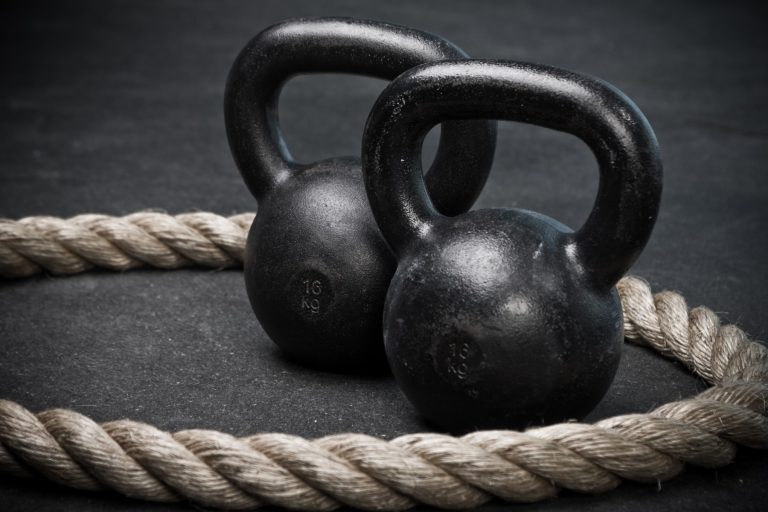Functional training has been around forever, but it’s recently started popping up more at gyms and boutique studios. Even Thor himself — aka Chris Hemsworthy — is relying on functional training workouts to keep his body prepared for everyday activities and bad-guy butt-kicking.
Unlike other workout trends, functional training can benefit everyone, even those of us not built like superheroes. The point is to improve your body’s mobility, making it functional for everyday activities.
What is functional training?
According to Dr. Lev Kalika, internationally known chiropractor and owner of New York Dynamic Neuromuscular Rehabilitation and Physical Therapy, functional training engages the nervous system as a whole, rather than individual muscles.
“The goal of functional training is improvement of movement control rather than strengthening,” he explains.
Basically, muscles are engaged in such a way that they can coordinate and co-contract to maintain dynamic stability in multiple planes of motion.
MORE: Summer sweating vs. exercise sweating vs. sweat lodge sweating — what’s the difference?
“This type of training is conducted in such a way that the movement performed is initiated from a stable base of support, continues in engaging muscular chains rather than individual muscles, and is providing a specific task that the patient or the athlete focuses on,” says Kalika.
Jamar Robinson, health and wellbeing strategist and founder of PlayHrdTrainHrd, Atlanta’s fastest-growing network of fitness professionals, adds, “[Functional training] trains your muscles to work together and prepares them for daily tasks [by] simulating common movements you might do at home, work or in sports.”
Functional training fan Adam Levine engages in “functional but joint-friendly lifts” with his trainer, Harley Pasternak, to help him do everything from jumping out of bed in the morning to belting out a tune and, as the song says, moving like Jagger.
What are the benefits of functional training?
According to Dr. Kalika, functional training’s benefits are extensive, and the biggest is general health improvement.
“Movement, which is functional, not only improves muscle strength and control but also improves breathing and the cardiovascular and limbic systems,” he explains.
Other benefits include:
- Improved motor control
- Improved movement efficiency, from a muscle and fascia perspective
- Improved movement efficiency from brain energy expenditure
- Improved cerebral circulation
- Improved proprioception
- Decreased joint loading (better distribution of load)
- Improved microcirculation
- Improved joint stability
Who is it good for?
Functional training can be beneficial for anyone, but it’s especially good for those undergoing any type of rehab, whether orthopedic, sports or neurologic.
“It is good for all of them because it does not target one system or one tissue within the neuro-musculoskeletal system, but rather integrates all of the components and constituents, forcing them to cooperate,” says Dr. Kalika. “We say: What fires together, wires together.”
It can also help with preventing injuries and returning to sports after a hiatus.
What does a functional training session consist of?
Because the goal of functional training is to get your body primed for everyday activities, most workouts aren’t very complex.
MORE: I tried 6 happiness hacks backed by science — here’s what actually worked
“I personally feel that one to three of the following movements — squats, pushups, pull-ups/chin-ups, walking lunges and deadlifts — should be in every functional training routine,” Robinson says. “If you are only working out one to two days, however, you can do all five.“
Just make sure that, if you are working out twice a week and choose to do all five movements, that you give yourself one to two days’ recovery time between workouts.
Looking for the best water to fuel your workout? Check out our water test how-to below.









